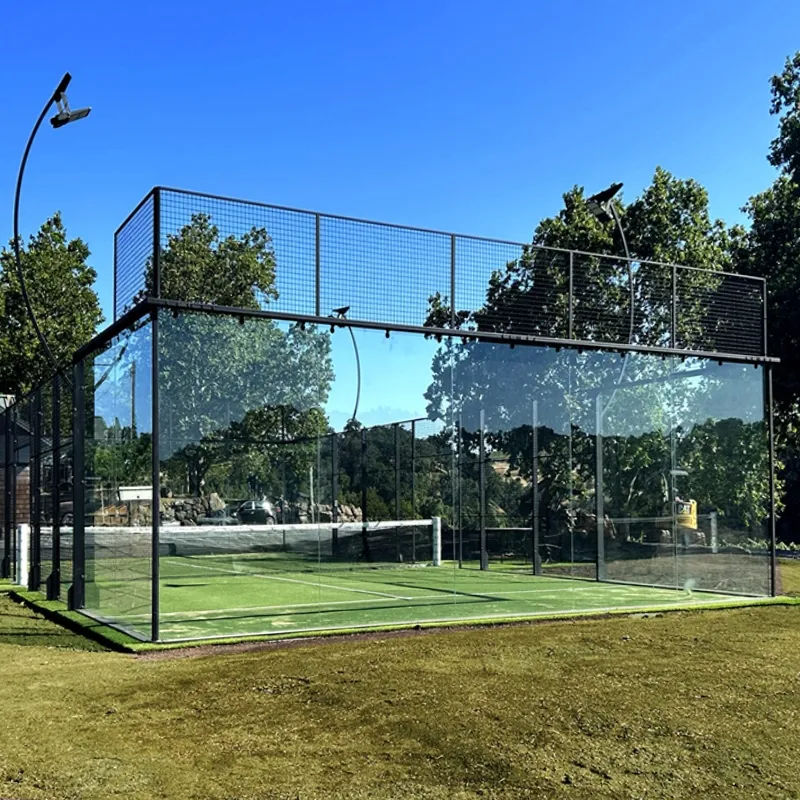
- Afrikaans
- Albanian
- Arabic
- Armenian
- Azerbaijani
- Basque
- Belarusian
- Bengali
- Bosnian
- Bulgarian
- Croatian
- Czech
- Danish
- Dutch
- English
- Esperanto
- Estonian
- Finnish
- French
- Galician
- Georgian
- German
- Greek
- hawaiian
- Hindi
- Hungarian
- Indonesian
- irish
- Italian
- Lao
- Latvian
- Lithuanian
- Luxembourgish
- Macedonian
- Maltese
- Myanmar
- Norwegian
- Polish
- Portuguese
- Romanian
- Russian
- Serbian
- Slovak
- Somali
- Spanish
- Swedish
- Thai
- Turkish
- Turkmen
- Vietnamese
Δεκ . 24, 2024 17:36 Back to list
Efficient Steps for Installing Commercial Chain Link Fences with Professional Tips
A Comprehensive Guide to Commercial Chain Link Fence Installation
When it comes to securing commercial properties, chain link fencing is often the go-to solution for many businesses. Known for its durability, low maintenance, and cost-effectiveness, chain link fencing provides a robust barrier that keeps property lines clear and assets secure. If you are considering installing a chain link fence for your commercial property, this guide will outline important steps and considerations to ensure a successful installation.
Understanding Chain Link Fencing
Chain link fencing is made from galvanized steel wire woven together in a diamond pattern. This design allows for visibility and air circulation while also providing a formidable barrier against unwanted entry. Chain link fences come in various heights, typically ranging from 3 to 12 feet, and can be coated with vinyl in different colors for aesthetic purposes. They are versatile and suitable for a variety of applications including security for warehouses, sports fields, and outdoor storage areas.
Planning Your Installation
The first step in the installation process is proper planning. Here are several important considerations
1. Permits and Regulations Before starting any installation project, check local zoning laws and regulations regarding fencing. You may need specific permits, and your fence will need to comply with local height restrictions and property line setbacks.
2. Property Survey Conduct a property survey to determine the exact boundaries of your land. Mark the corners and sides where the fence will be installed. It’s crucial to ensure that you are not encroaching on your neighbor’s property.
3. Design Requirements Consider the style and function of the fence. Will it need privacy slats? Should it include barbed wire at the top for security? Understanding your needs beforehand can guide you in purchasing the right materials.
4. Budgeting Establish a budget that includes materials, labor, and any additional costs such as tools for installation. Chain link fencing is generally more affordable compared to other fencing options, but planning for unexpected costs is essential.
Material Selection
Once you’ve completed your planning, it’s time to gather the materials you will need for the installation. Key materials include
- Chain Link Fabric The wire mesh that will form the main part of your fence. - Posts Steel or aluminum posts will serve as the fence's framework, providing stability. - Top Rails These are used to connect the posts and give added support to the fence fabric. - Gates Choose gates that will provide access to your property while maintaining security. - Concrete For setting posts securely into the ground.
commercial chain link fence installation

Installation Steps
With your planning and materials in place, follow these general step-by-step instructions for installation
1. Post Installation Start by digging post holes at regular intervals along the marked boundary. Generally, posts should be spaced about 5 to 10 feet apart. Install corner and end posts first, ensuring they are plumb using a level.
2. Setting Posts Pour concrete into the holes and allow it to cure according to the manufacturer's instructions. This provides the necessary strength to withstand weather elements and impacts.
3. Installing the Top Rail Connect the top rail between the posts using connectors as directed. This will help the fence maintain its shape and integrity.
4. Attaching the Chain Link Fabric Begin unrolling the chain link fabric from one end to the other. Attach it to the posts using tension bands. Make sure it is taut to avoid sagging.
5. Securing the Bottom Once the fabric is secured to the posts, attach it to the ground using stakes or by placing the fabric into a top rail channel for added strength.
6. Installing Gates Install any access gates, ensuring they swing freely and align with your desired entry points.
Final Touches
Once the installation is complete, take a moment to review the fence for any inconsistencies. Make necessary adjustments, and if you opted for vinyl-coated chain link, check for any areas that may need additional coating.
Conclusion
Installing a commercial chain link fence can be a straightforward process when approached methodically. By understanding the requirements and following the appropriate steps, you can achieve a secure and effective fence that meets your business needs. Whether you hire professionals or undertake the project yourself, chain link fencing remains a practical solution for countless commercial applications.
-
Versatile Sheep and Livestock Hurdles for Sale
NewsApr.14,2025
-
The Rise of BRC Fencing
NewsApr.14,2025
-
High-Quality Cattle and Horse Panels for Sale
NewsApr.14,2025
-
Durable Cattle Fencing Solutions
NewsApr.14,2025
-
Double Wire Fencing Solutions
NewsApr.14,2025
-
360 Degree Protection with 358 Anti-Climb Fences
NewsApr.14,2025









